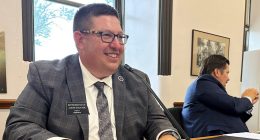This lockdown comes with increased pressures for educators, writes a primary headteacher
In March 2020, when we first went into lockdown, my school went overnight from over 200 pupils to having between three and 10 pupils. Having seen it coming way before the government – not that you needed the gift of prophecy – we were prepared with remote learning from the very next day.
We were able to keep staff and pupils safe, and invite in the handful of pupils who we knew were more at risk, satisfied that this would work within our risk assessments.
Today, the picture in my school and in those of many of my peers could not be more different. Today I have nearly a quarter of my pupils eligible for a place. All of them want it and more are still getting in touch. How has that picture changed so significantly in under 10 months with practically the same cohort of pupils? Who are these pupils?
There is the core group, the ones we saw in the last lockdown, whose parents are health professionals, food distributors, social workers, bus drivers and children of those working in education. They know the drill and there is mutual respect between us communicated in nods at the end of the day.
Then we have the parents who technically qualify for a place because one of them works in a key worker profession, but actually they and their partner were able to look after their child the last time. This time though, they’ve weighed up the personal cost of how difficult they found home schooling with the risks to their child.
Then there are the vulnerable children. Last time, that was based on school knowledge because actually we know the children best. This time there is strict categorisation, which as always misses the nuances. Not every child who has a local authority care plan (known as an EHCP) needs a place – I know that many parents of special needs children find this deeply insulting, that their child is deemed vulnerable. Vulnerable from what? But now we have to encourage these families in and mark them in the registers as not attending. Therefore some come in.
My greatest concern is the pupils who do not fit in the vulnerable category but absolutely should. Because the reality is, these are the ones without any agency looking out for them. The ones without social workers who truly need the stability of school. The ones who keep me and thousands of other teachers awake at night.
Some may scoff at the idea of having 25% of our pupils in. Surely that would make it easier to socially distance. But a couple of problems have arisen.
Firstly, we are now under a legal framework which entitles all the pupils who are at home learning to have a standard of remote learning equivalent to what they would get in school. And too right, of course they should. Though seriously, Gavin Williamson, I know Ofsted inspectors have bugger all to do at the moment, but telling parents to run to them when they don’t quite like something with their learning is a bit low when only a minute before you said you trusted teachers.
Contrary to popular belief, it is impossible to be both in two places at once. Many parents demanded full days of live lessons. Thankfully, I have been able to persuade my community that this is not desirable or attainable for practical reasons, if anything, but I know other schools are ploughing on.
Related: English schools struggle with demand for key worker places



